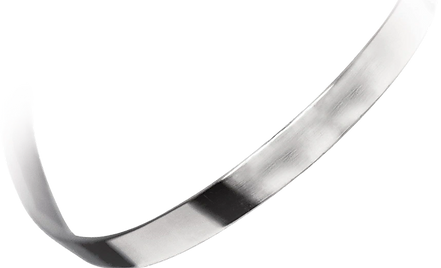
Pectus Repair Bar
Pectus Excavatum Correction
Treat Pectus Excavatum (funnel or sunken chest) with a minimally invasive surgery using the Pectus Support Bar.

Sunken Chest
About Pectus Excavatum
Pectus excavatum is a congenital chest deformity caused by abnormal growth of the cartilage that holds the ribs to the breastbone (sternum). The breastbone is pushed inward creating a condition in the chest sometimes referred to as “funnel chest” or “sunken chest.” Pectus excavatum is typically present at birth and can become more severe as a child gets older, especially during growth spurts in adolescent years, though that is not always the case. Severe cases of pectus excavatum may interfere with the function of the heart and lungs, but also may play a part in a child’s self-esteem*.

Normal Chest
Pectus excavatum occurs in approximately 1 out of every 300 to 400 births, making it one of the most common chest wall deformities.
Pectus Excavatum Correction with The Nuss Procedure
Minimized Operating Time, Minimized Blood Loss – Faster Return to Activity
Pectus excavatum is not preventable, but it is treatable with corrective surgery. Surgical treatment of pectus excavatum is intended to reduce pressure on vital organs and create a more normal chest shape by repositioning the chest including the ribs, sternum or “breastbone,” and the cartilage that connects the ribs to the breastbone.
Dr. Donald Nuss, in cooperation with Zimmer Biomet, developed a minimally invasive surgical procedure and Pectus Bar implant to remodel the chest wall over a 2 to 3 year period. The Nuss Technique, also known as the “Minimally Invasive Repair of Pectus Excavatum”(MIRPE), uses principles of minimal-access surgery and thoracoscopy combined with the proper placement of a Pectus Bar to achieve correction of Pectus Excavatum. This minimally invasive technique has impacted the lives of thousands of patients around the world.

Pectus System Features:
The Pectus Bar’s rounded ends and blunt edges help minimize tissue destruction during implant insertion.
Pectus Bars come in a variety of lengths, ranging from 17.8cm to 43.2cm, to accommodate most pectus excavatum correction procedures.
All instruments in the Pectus System are designed to increase simplicity during the Nuss Procedure.
Patient-matched Titanium implants for those with certain metal allergies.

Benefits of the Nuss Procedure
Quality of Life.
Compared to traditional methods, this minimally invasive technique allows for less surgery time and a quicker return to regular activity¹.
40 Min of Operating Time.
MIRPE takes approximately 40 minutes as opposed to the four to six hours required for the Ravitch procedure².
-
Nuss D, Kelly RE, Croitoru D, Katz ME. A 10-year review of a minimally invasive technique for the correction of pectus excavatum. Journal of Pediatric Surgery. 1998;33(4):545-552.
-
Kelly RE, Nuss D, et al. Twenty-one years of experience with minimally invasive repair of pectus excavatum by the Nuss procedure in 1215 Patients. Annals of Surgery. 2010; 252(6):1072-1081
Legacy studies | Patient information
With more than 100,000 patients treated globally and two decades of clinical data, Zimmer Biomet is dedicated to supporting surgeons and patients.
Contact us for more information and papers on Pectus Repair
Product images
Featuring Pectus Bar implants, sunken vs normal chest, and in-use images.
Learn more about the
Pectus Repair Bar
Download our brochure to uncover what the Pectus Bar and Nuss Procedure entails.






